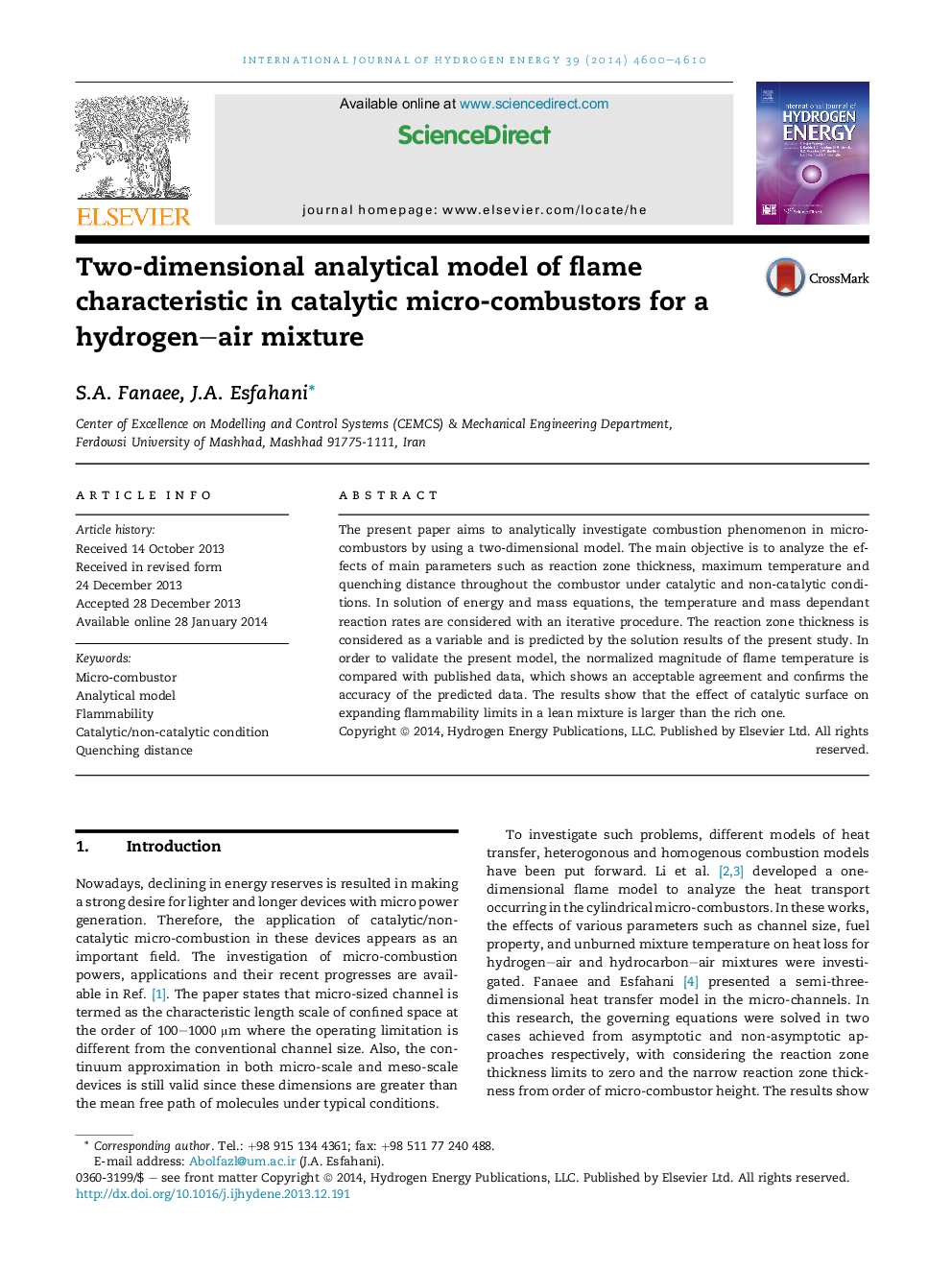| Article ID | Journal | Published Year | Pages | File Type |
|---|---|---|---|---|
| 1270549 | International Journal of Hydrogen Energy | 2014 | 11 Pages |
•The limitations of low and high Peclet number can be attained in this work.•The non-catalytic maximum temperature is larger than catalytic one, up to 55%.•The non-catalytic reaction zone thickness is larger than catalytic one, up to 20%.•In lean mixtures the quenching distances are larger than rich ones, up to 18%.•The wide ranges of flammability are attained in catalytic condition.
The present paper aims to analytically investigate combustion phenomenon in micro-combustors by using a two-dimensional model. The main objective is to analyze the effects of main parameters such as reaction zone thickness, maximum temperature and quenching distance throughout the combustor under catalytic and non-catalytic conditions. In solution of energy and mass equations, the temperature and mass dependant reaction rates are considered with an iterative procedure. The reaction zone thickness is considered as a variable and is predicted by the solution results of the present study. In order to validate the present model, the normalized magnitude of flame temperature is compared with published data, which shows an acceptable agreement and confirms the accuracy of the predicted data. The results show that the effect of catalytic surface on expanding flammability limits in a lean mixture is larger than the rich one.
